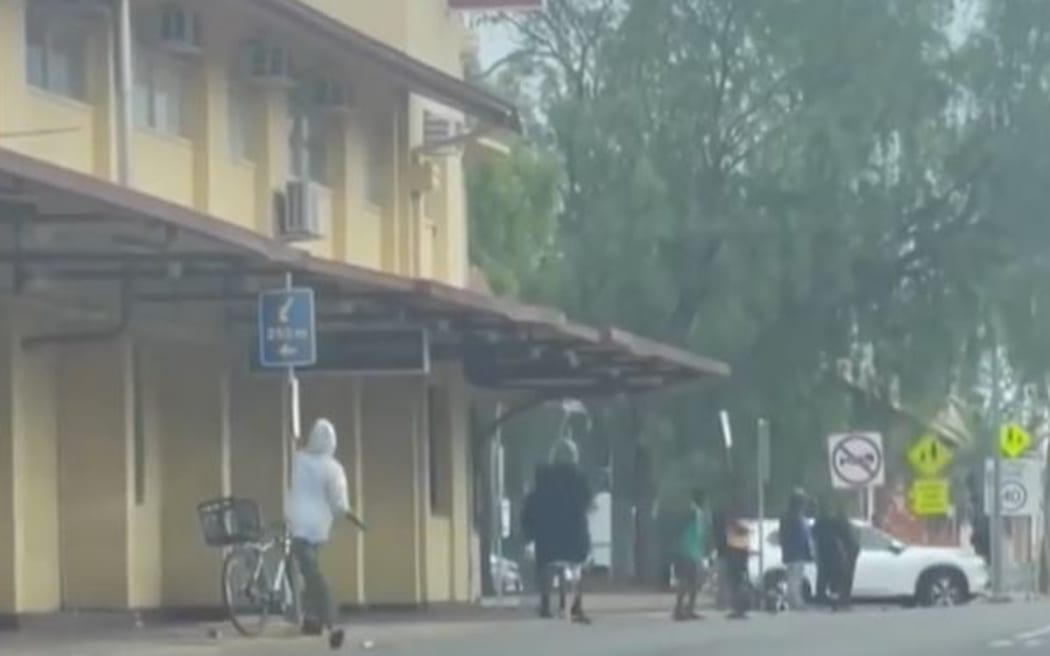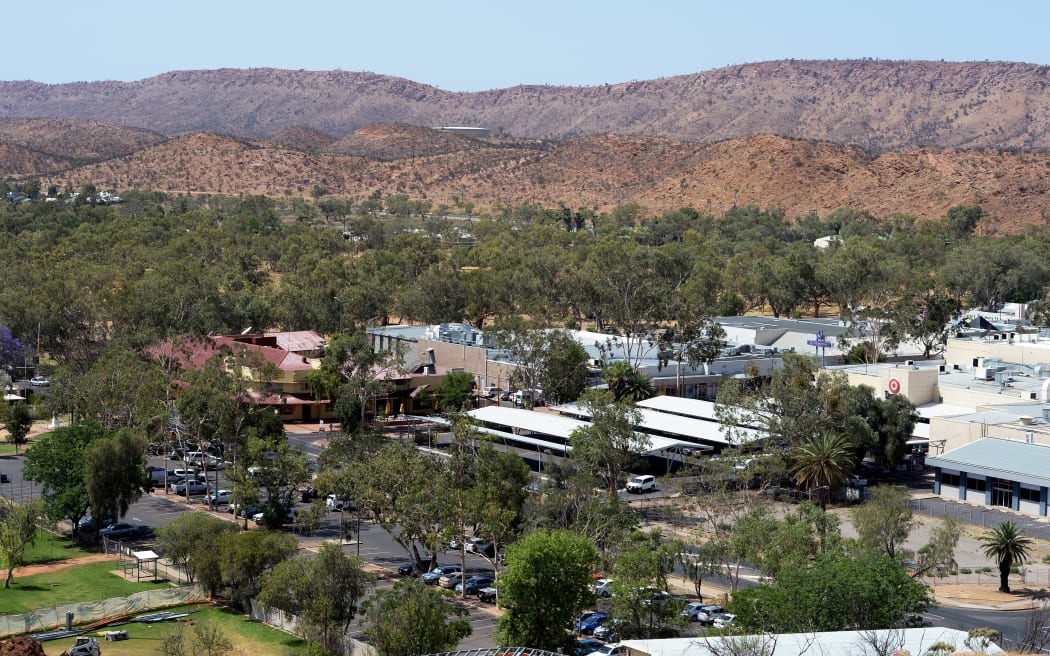By Charmayne Allison, ABC

A youth curfew was introduced in the Australian town of Alice Springs after a series of violent incidents, including a riot. Photo: Screenshot / TVNZ
After almost three weeks, the Alice Springs youth curfew is over.
The emergency measure was introduced on March 27 in the wake of a series of violent incidents, including an attack on an Alice Springs pub and a brawl involving up to 150 people.
It meant between 6pm to 6am, young people under the age of 18 couldn't enter the CBD without a "lawful purpose".
Initially slated for 14 days, the measure was extended last week to cover the rest of the school holiday period.
And today at 6am, after weeks of feverish media attention and growing calls from community leaders for long-term action, the curfew has lifted.
Here's a look back at what we learned.
The curfew was divisive
The measure has triggered mixed reactions, lauded as a "circuit-breaker" by some and a "punitive", "knee-jerk" response by others.
Many residents told the ABC it made the embattled town feel quieter and safer and gave Alice Springs a much-needed respite.
Others said the curfew was "unfair" to young people, with some concerned it could further criminalise children and teenagers.
Residents and frontline organisations consistently argued it was a "bandaid solution", calling for longer-term solutions to be prioritised.
The legality of the curfew, which was implemented after the government invoked emergency powers, was also called into question by the Northern Territory Police Association.
However, the NT Government insisted it acted lawfully with no formal legal challenges made against the curfew to date.

Those under the age of 18 could not enter the Alice Springs CBD without a "lawful purpose" between 6pm-6am. Photo: AFP/Greg Wood
How were kids affected?
The curfew was introduced ahead of the Easter long weekend and the NT's school holiday period, impacting the lives of nearly 7000 young people in the outback town.
Young people were not allowed to be in the declared "high risk" area unless they had a valid reason, such as work, sport or making their way home.
Kids found in the no-go zone without a lawful reason were taken home or to another "safe place" by authorities but could not be forced to stay there.
And with the NT reporting the highest rates of youth homelessness and family violence in the country, there were concerns children were on the streets at night because they had nowhere else to go.
Several young people told the ABC they felt the curfew tarred all Alice Springs young people with the same brush, and unfairly punished them for the actions of a few kids "running amok in town".
Armani Francois, 18, was stopped by police while escorting younger family members through the streets, describing the interaction as "intimidating".
No arrests reported by police so far
Police and Territory Families outreach workers have engaged with hundreds of young people in the high-risk area since the curfew was declared.
The North Australian Aboriginal Justice Agency was concerned the measure would lead to a "criminalisation of young people", as those who refused to leave the CBD could be charged.
So far, police have yet to announce any arrests.
The ABC requested further current data from NT Police - including the number of kids officers engaged with over the three-week curfew - but it did not respond before deadline.
They are expected to provide an update with information later today.
All agree it was only a short-term measure
With the curfew wrapping up, attention is now turning to possible long-term solutions to crime and antisocial behaviour in the region.
Central Australian leaders say action is needed not just in Alice Springs, but in remote communities right across the Red Centre.
Donna Ah Chee, chief executive of the Central Australian Aboriginal Congress, says alcohol is a major factor behind unrest in the town and is calling for better policing at local bottle shops.
She also urged the introduction of "responsibility agreements" for families of repeat youth offenders, which would quarantine parents' welfare payments and remove repeat offenders from unsafe households.
Arrernte man and Children's Ground chair William Tilmouth argued governments needed to step away from "top-down approaches" and better empower Indigenous Australians to access meaningful employment.
And Blair McFarland, who runs a youth link-up service in Alice Springs, called for NDIS coordinators in each remote community to provide care for those with specialist needs, particularly those with fetal alcohol spectrum disorder (FASD).
Could we see another curfew imposed in future?
It's unclear, but the NT government has left the door open to calling another one in future.
The Country Liberal Party has also voiced support for the measure.
Chief Minister Eva Lawler denied the curfew was an attempt to win back popular support ahead of the NT election in August.
But any future legal challenge could impact the chance of introducing another curfew.


